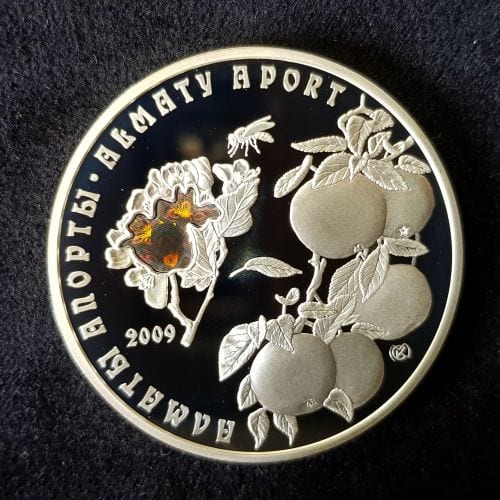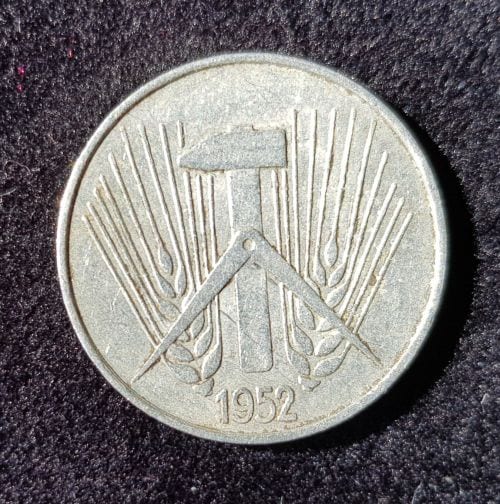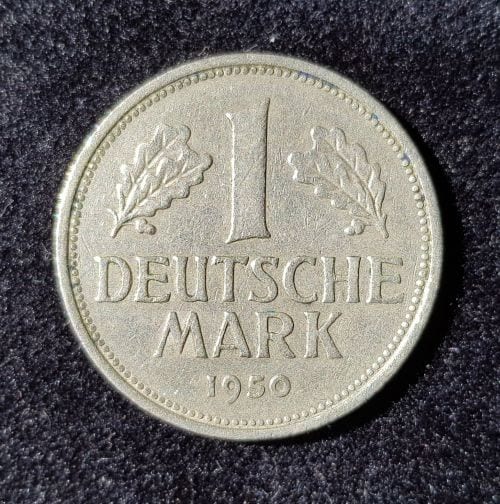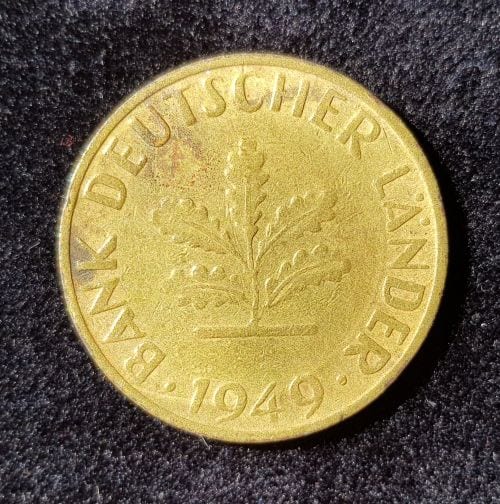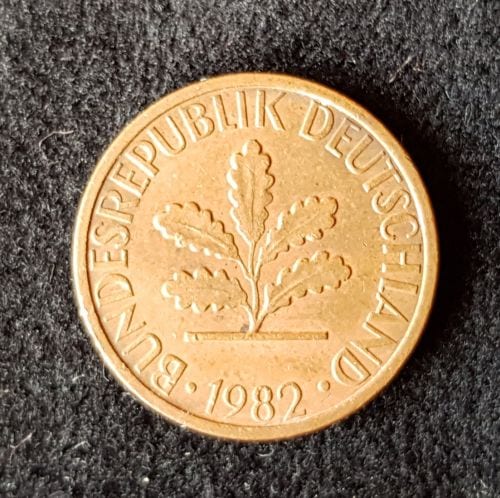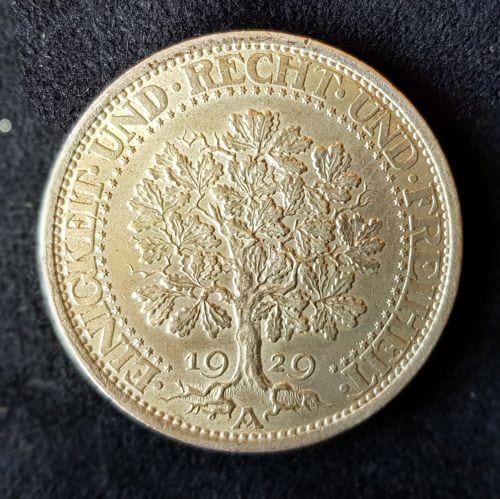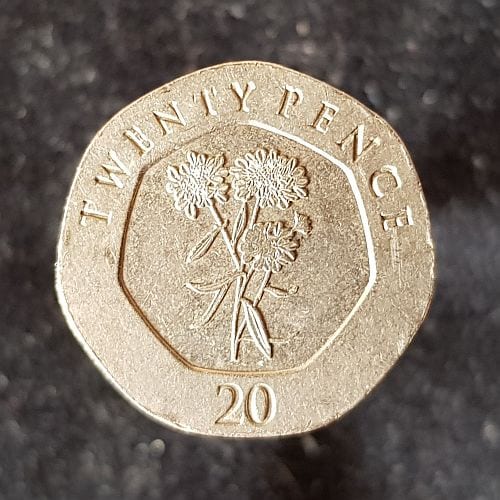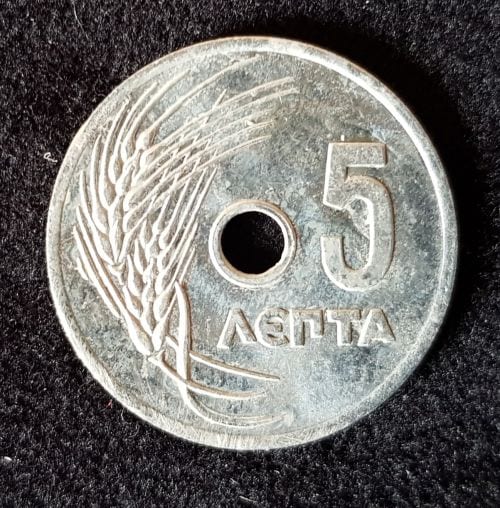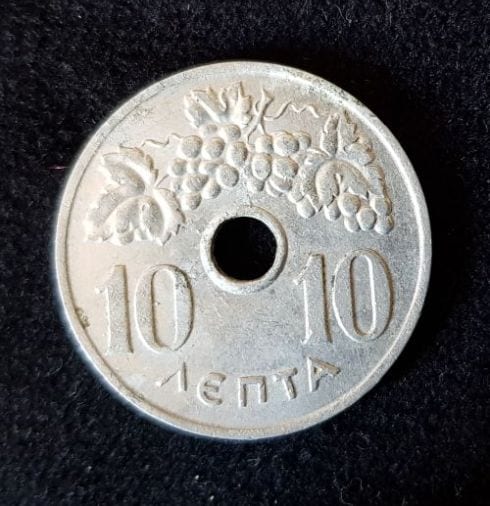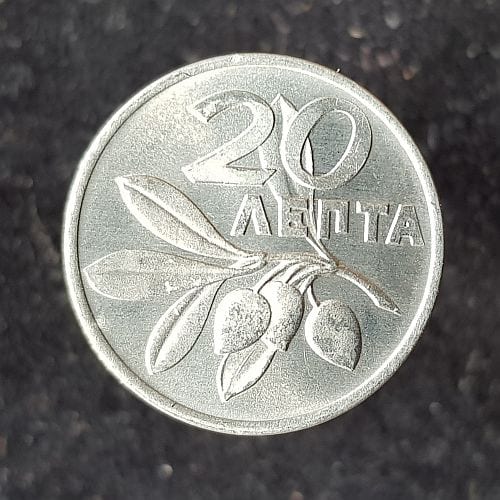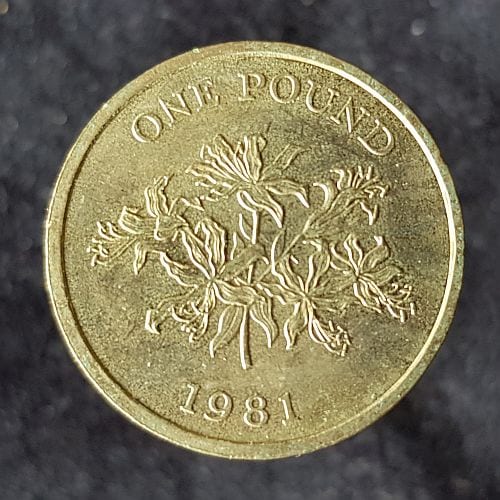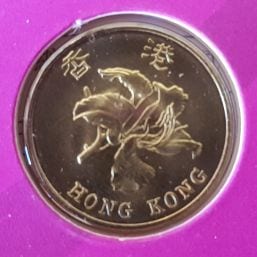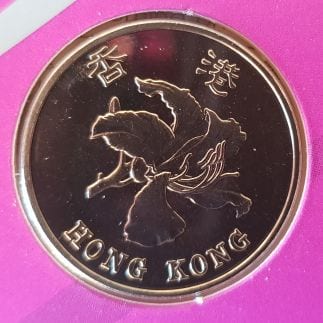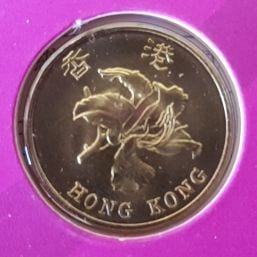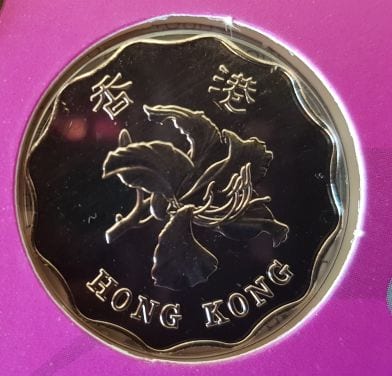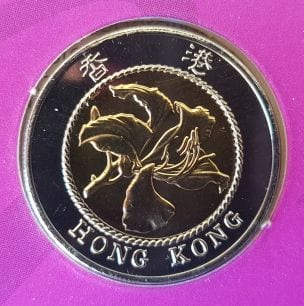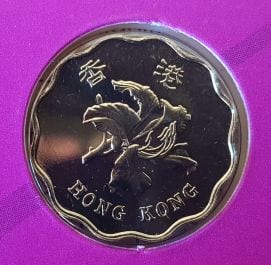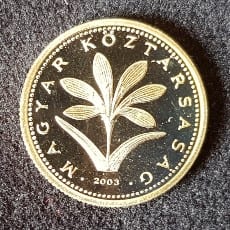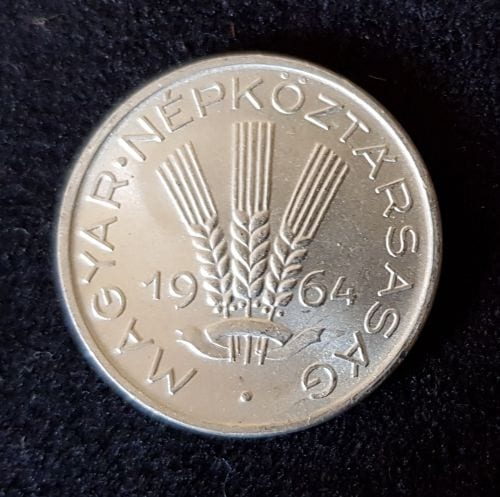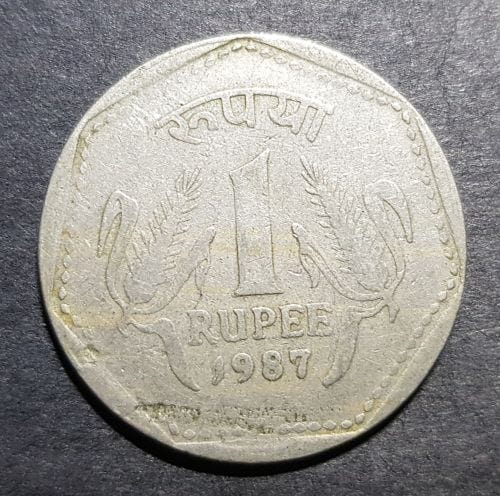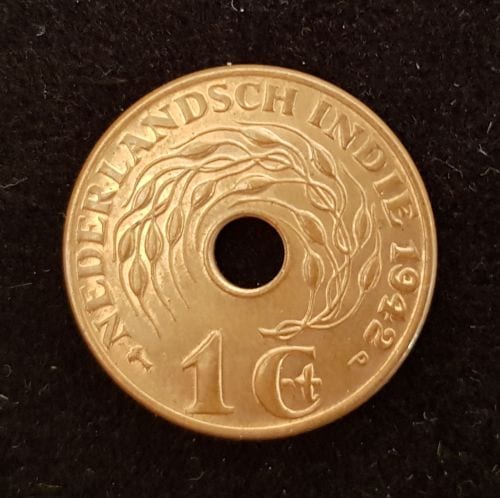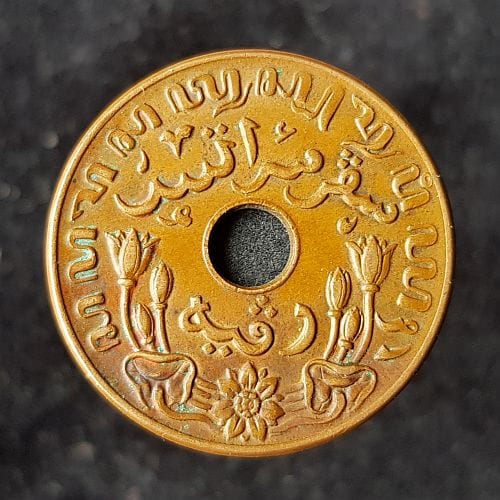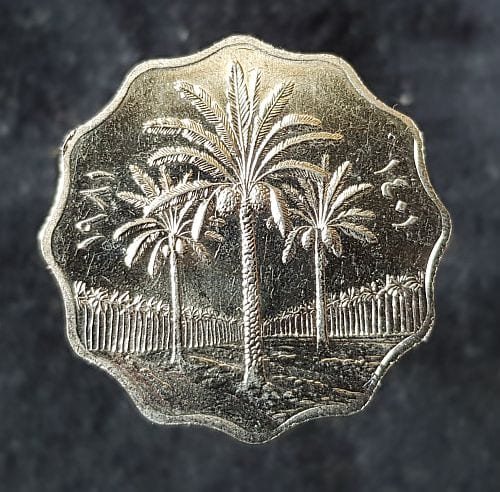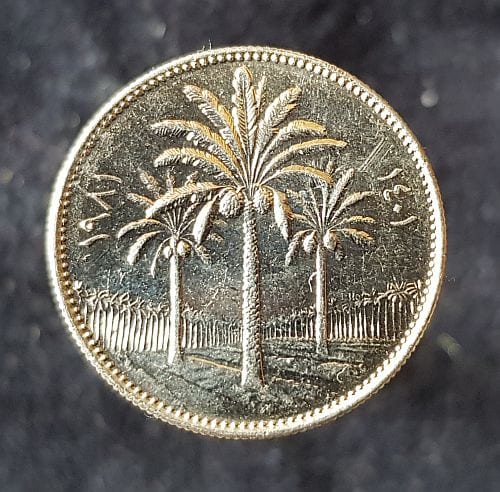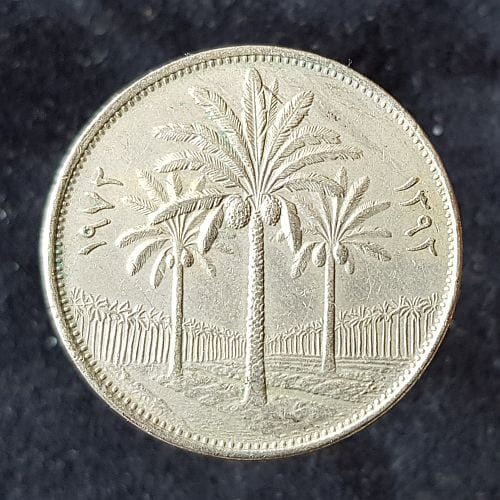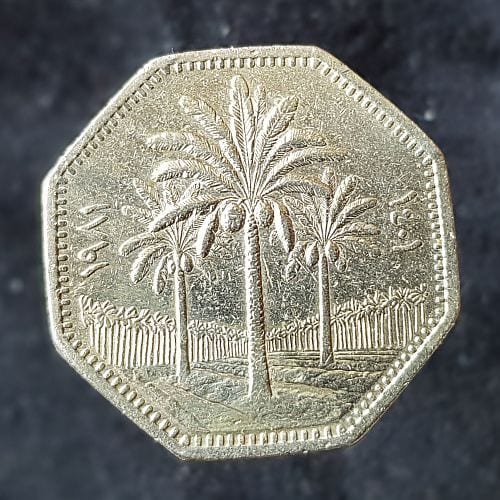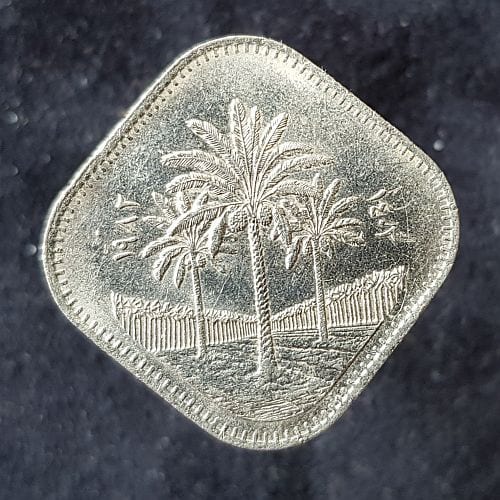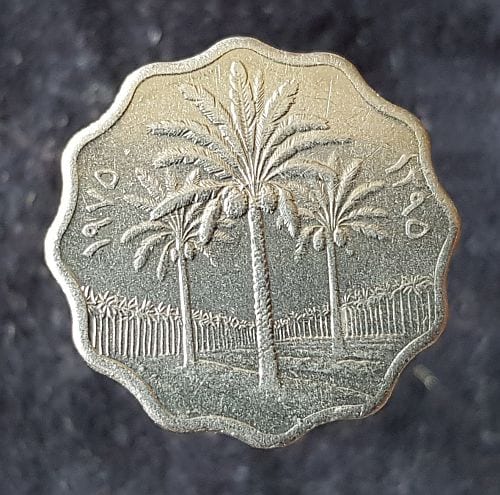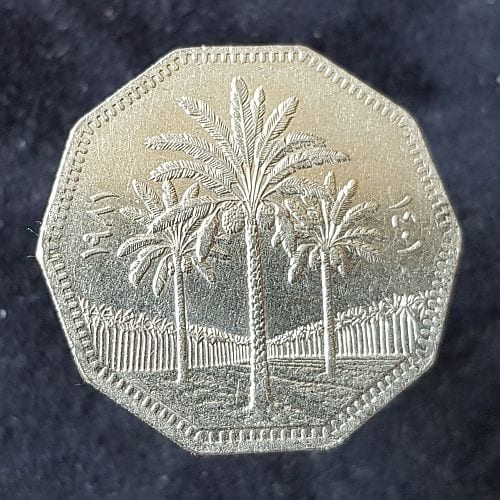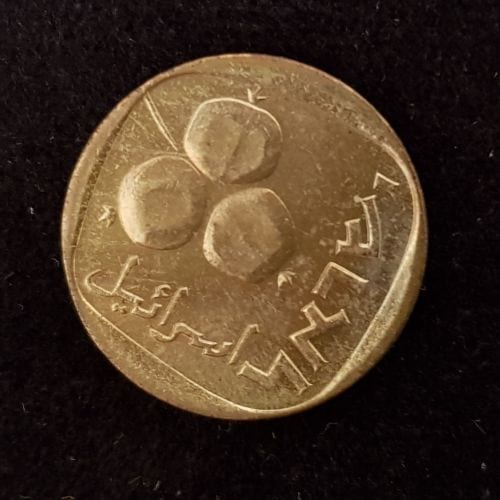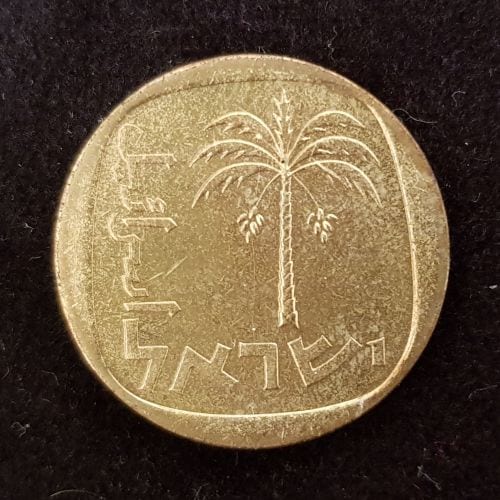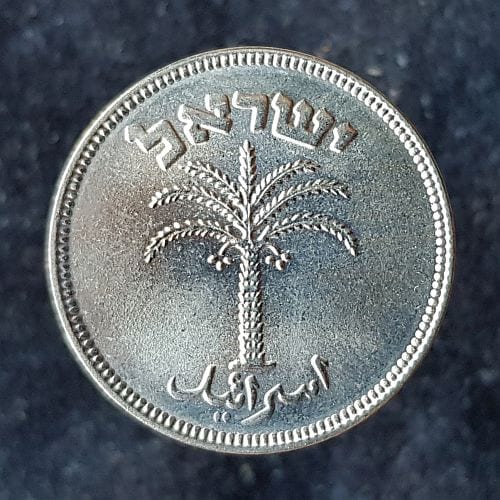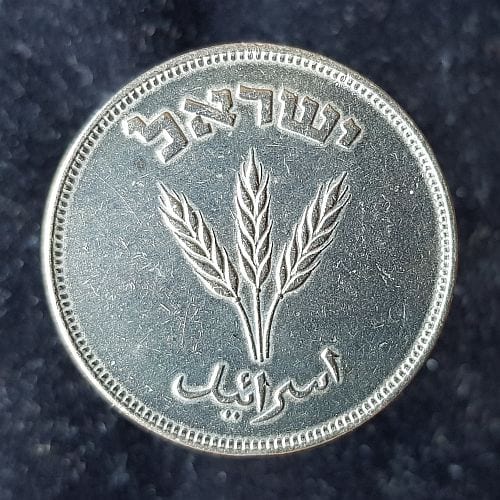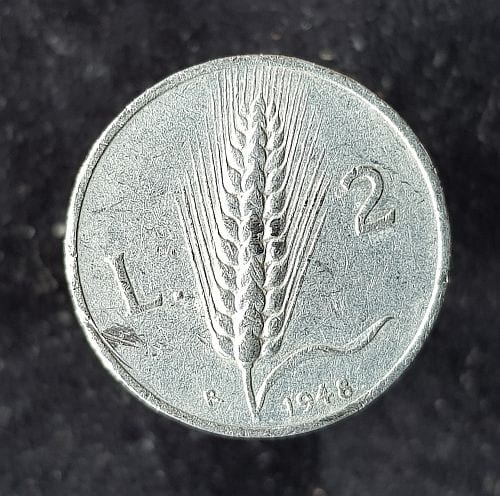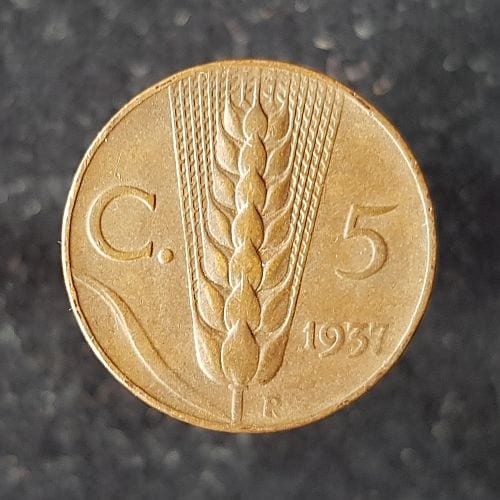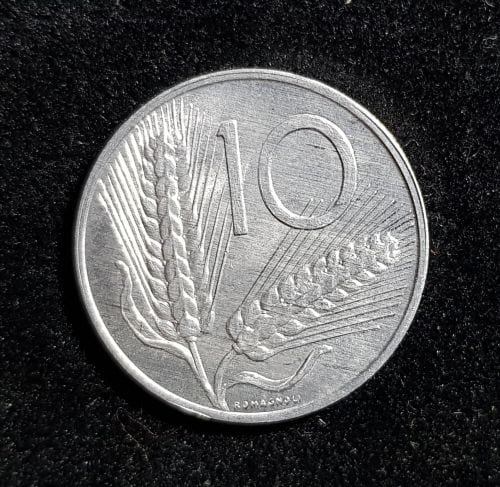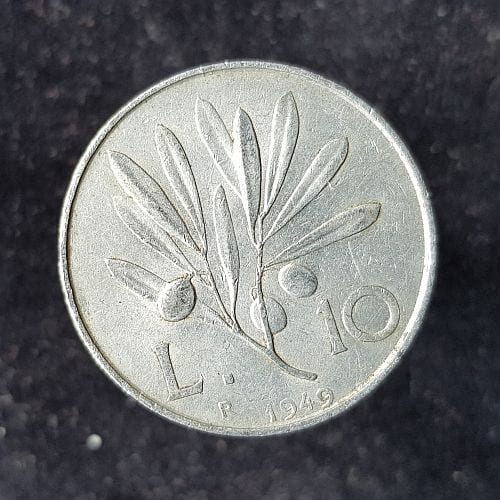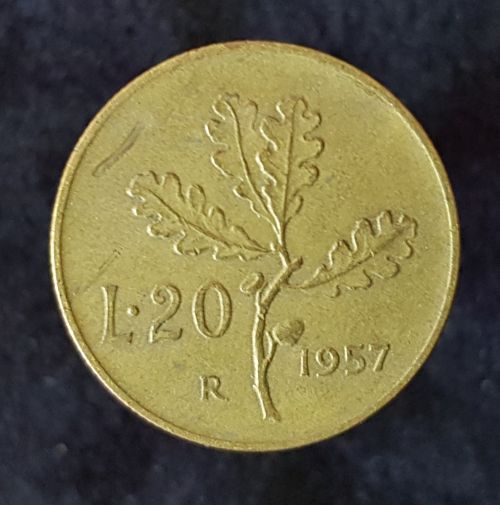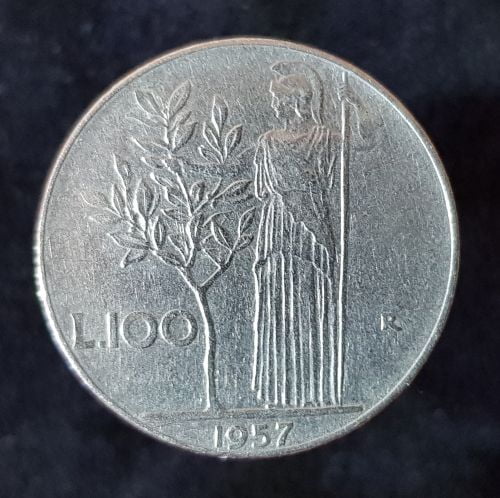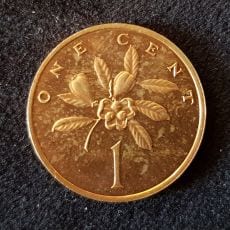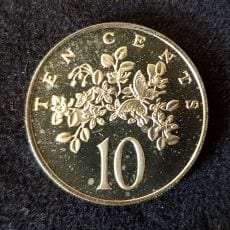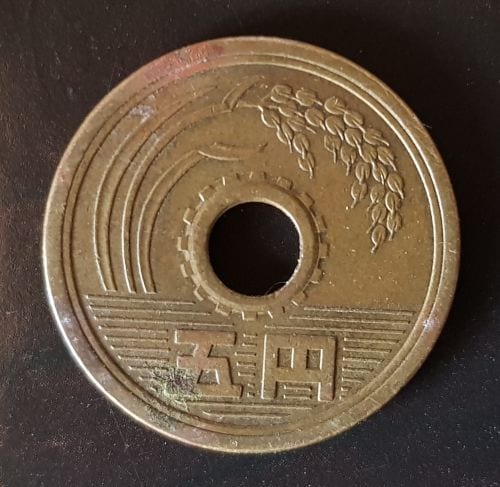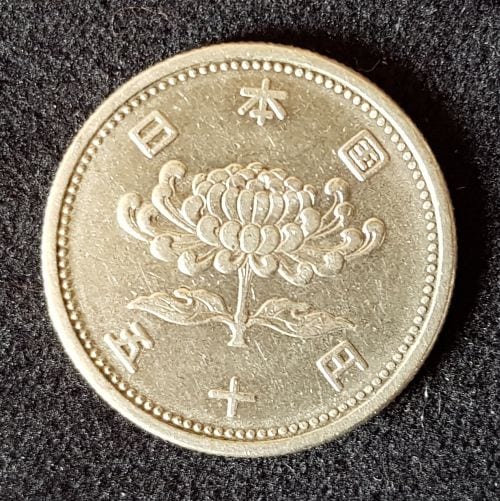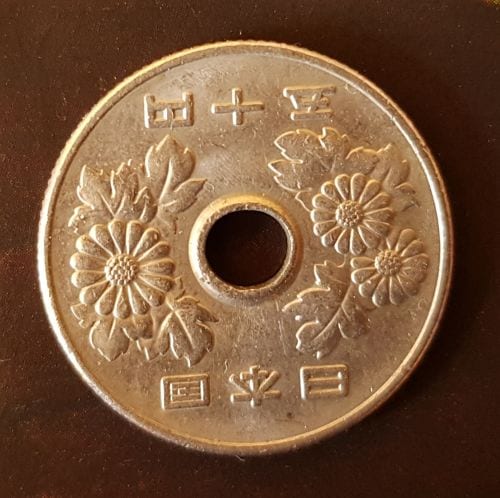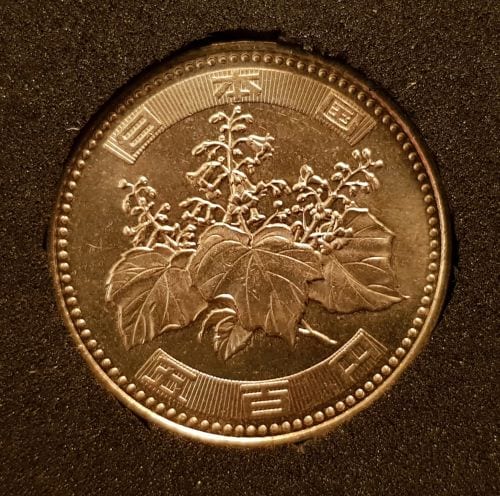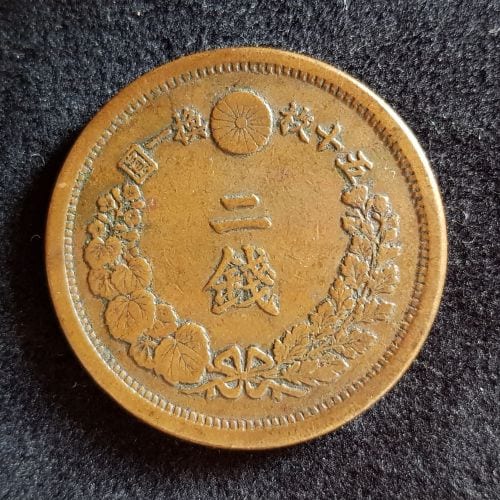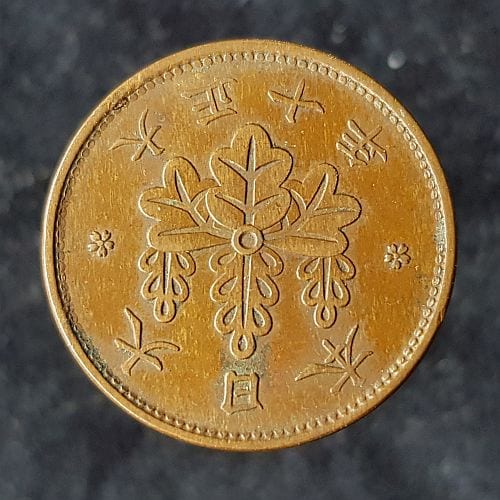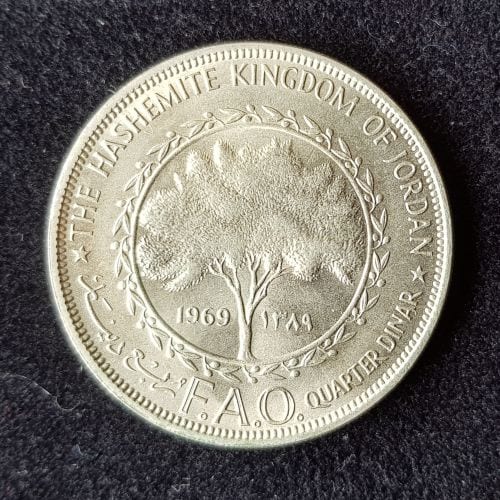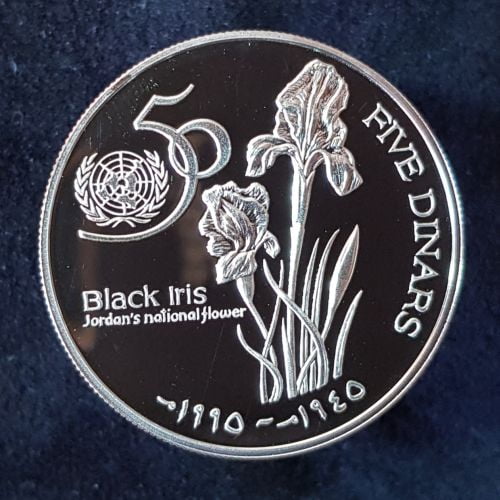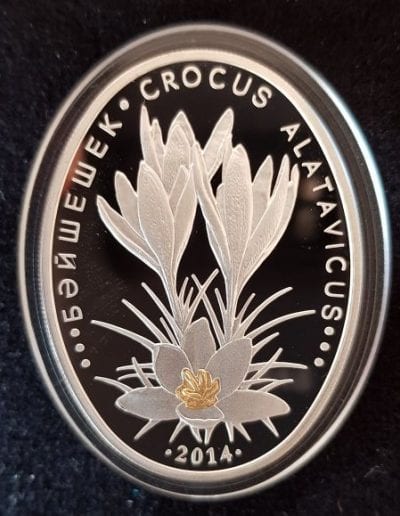
Coin gallery f-k
Coins, banknotes and postage stamps are products of Industria (complex industrial market societies) that are now being replaced by email, plastic debit cards, and electronic fund transfer, as we move into the virtual dimension of the age of Informatia. The value of physical reminders of the past will certainly increase in the future because they provide a simple tangible window into the world of political, social, and cultural history, geography, art, and technological change. The following gallery of coin images gathers in one place the plant iconography of world coins over the last 2500 years. For added historical context I have given an introductory summary history for each country with comments on coinage. This information is often adapted from that given in Krause’s Standard Catalogue of World Coins.
The goal is to interpret changing human historical attitudes to plants over two and a half millennia through the medium of coin iconography.
The selection of coins presented here are, unless otherwise stated, those in my own numismatic collection. Unsurprisingly there is a lack of gold coins and expensive sets although I have endeavoured to refer to these in the text. Tokens are included where possible as they were often produced by established mints and carried depictions of plants e.g. the early colonial tokens of Australia and Canada.
I have concentrated on coins showing plants as specimen, where the plant is important as well as its decorative value – in wreaths etc. Inevitably the majority of plant images are emblems of various kinds rather than botanical or horticultural specimens.
I have also tried to include as many as possible of the world’s 195 sovereign countries that have released coins bearing specimen plants but, needless to say, it is incomplete.
Coins in the galleries are presented in alphabetical order of country and, mostly, chronological order from left to right and row to row.
Coins, banknotes and postage stamps are products of Industria (complex industrial market societies) that are now being replaced by email, plastic debit cards, and electronic fund transfer, as we move into the virtual dimension of the age of Informatia. The value of physical reminders of the past will certainly increase in the future because they provide a simple tangible window into the world of political, social, and cultural history, geography, art, and technological change. The following gallery of coin images gathers in one place the plant iconography of world coins over the last 2500 years. For added historical context I have given an introductory summary history for each country with comments on coinage. This information is often adapted from that given in Krause’s Standard Catalogue of World Coins.
The goal is to interpret changing human historical attitudes to plants over two and a half millennia through the medium of coin iconography.
The selection of coins presented here are, unless otherwise stated, those in my own numismatic collection. Unsurprisingly there is a lack of gold coins and expensive sets although I have endeavoured to refer to these in the text. Tokens are included where possible as they were often produced by established mints and carried depictions of plants e.g. the early colonial tokens of Australia and Canada.
I have concentrated on coins showing plants as specimen, where the plant is important as well as its decorative value – in wreaths etc. Inevitably the majority of plant images are emblems of various kinds rather than botanical or horticultural specimens.
I have also tried to include as many as possible of the world’s 195 sovereign countries that have released coins bearing specimen plants but, needless to say, it is incomplete.
Coins in the galleries are presented in alphabetical order of country and, mostly, chronological order from left to right and row to row.
Numismatics
Though historical interest is paramount, the numismatist is always concerned with value because building up a collection can be expensive, although prices paid for coins are mostly around half that listed in catalogues.
The coin captions containing numismatic information presented in the following order (as known):
Plant common name/plant scientific name/monarch/denomination/year/mint & number struck/metal/weight/diameter/width/grade/value/designer/reference
Historically it has often been the intention of a country to maintain parity between the face value of the coin and the value of the metal it contains, hence the coin denominations ascending in value from copper/bronze, to silver, to gold: but all great civilisations have resorted to ‘debasement’ in hard times and in our day coins have little metallic value so our money, both coins and notes, are ‘fiat money’ – money whose value is based on trust rather than the value of the object itself.
For collectors and investors, coins with metal content approaching face value have value for the metal alone and many people treat these as bullion, stacking them away as a form of investment. So, for example, British pennies and halfpennies originally minted in copper were, after 1860, minted in bronze. Pre-1919 British silver coins were made of sterling silver which was 92.5% pure silver: from 1919 to 1947 50% silver: then from 1947 the alloy cupronickel. American silver coins up to 1964 were 90% silver.
Today some mints deliberately strike bullion coins which they sell at a premium over the spot metal price on the markets as a means of making revenue. One well-known example is the Royal Canadian Mint’s Silver 1 oz Maple Leaf coin that is 99.9999 pure silver, the purest government-backed silver coins in the world. Coin catalogues (and the captions here) express silver content using a decimal point e.g. .925, .8, .5 etc.
For the coin collector obviously scarcity and interest play a major role in a coin’s additional numismatic value but, even more important than this is the physical condition of the coin itself. Even common coins can be worth a lot of money if they have not been in circulation.
Countries have different ways of ‘grading’ coins but the system described below is the most familiar and is the one used in the gallery captions. The value of a coin is related directly to its grading as given in coin catalogues. Inevitably there is a degree of subjectivity in the grading process.
F (Fine) – quite a lot of wear, but all the main features, most of its design, its date and lettering is still clearly readable.
VF (Very fine) – some wear but only to its higher points. Main designs visible. Relatively little circulation.
EF (Extremely fine) – very little wear, just faint at higher points and only visible on close inspection.
Unc. (Uncirculated) – No wear at all. Looks as it did when it left the mint with all the details intact.
There are various ways of indicating intermediate conditions, so if a coin is graded between VF and EF it might be shown the following ways: VF+, gVF, or VF/EF. aVF indicates that the coin is almost/about VF. There are other conventions: BU – Brilliant Uncirculated = uncirculated and with the original mint lustre (shine & colour).
Proof coins are early samples of a coin issue used to test the newly polished dies and for the production of archive coins: nowadays they are often struck in greater numbers for the numismatic market and can usually be distinguished from normal circulation coins by their sharper rims, designs and polished backgrounds.
In recent times there has been a trend towards simple and stylized graphic design with a cameo finish – where the relief (raised or recessed) features a frosted finish and the field (background) is mirror-like, or vice-versa. Cameo is usually seen on proof coinage. In 2006, the United States Mint issued the first ‘reverse proof’ coin, a variant of the American Silver Eagle, in which the relief is mirror-like and the field frosted.
GERMANY
Mints: A – Berlin, 1750-date D – Munich (Germany), 1872-date E – Muldenhutten (Germany), 1887-1953 F – Stuttgart (Germany) 1872-date G – Karlsruhe (Germany) 1872-date J – Hamburg (Germany) 1873-date
Currency: After German unification in 1871 the old Thaler system was abandoned in favor of the Mark (100 Pfennig = 1 Mark) but the Vereinsthaler continued to circulate as a legal tender 3 Mark coin, and the double Thaler as a 6 Mark coin until 1908. In 1908 the Vereinsthalers were officially demonetized and the Thaler coinage was replaced by the new 3 Mark coin which had the same specifications as the old Vereinsthaler. The double Thaler coinage was not replaced as there was no great demand for a 6 Mark coin. Until the 1930’s the German public referred to the 3 Mark piece as a ‘Thaler.
Commencing 1871 100 Pfennig = 1 Deutsche Mark (DM)
GERMAN STATES (843-1871) – Technically the German empire dates to the Treaty of Verdun whereby Charlemagne’s lands east of the Rhine were ceded to Prince Louis. Really there were many states owing allegiance to the Holy Roman Emperor, a German King but power devolved onto the lords of individual states, this fragmentation most marked with the Thirty Years War from 1618 to 1648 which ended the Hapsburgs’ attempt to unify Germany.
GERMAN EMPIRE (1871-1949) – With a growing nationalism (common to countries across Europe at this time) attempts to unify the many German territories into a single German state was achieved by Prussian aristocrat Otto von Bismarck (1818–1898) who establish in 1871 a German Empire dominated by Prussia and ruled by the Kaiser. This new state grew to dominate European politics at the close of the 19th and start of the 20th centuries until in 1918, after defeat in the Great War, the Kaiser abdicated and a republic was declared. On 14 April 1871 Otto von Bismarck when the King of Prussia became Emperor William I. The new empire consisted of 4 kingdoms, 6 grand-duchies and further regional subdivisions.
GERMAN DEMOCRATIC & FEDERAL REPUBLICS (1949-1990) – The German Democratic Republic (1949-1990, formerly East Germany) on the great north European plain had a population of 16.6 million including East Berlin, its capital. It had an industrial economy exporting machinery, transport equipment, chemicals, and lignite. At end of WWII Soviets occupied the German provinces of Mecklenburg, Brandenburg, Lusatia, Saxony and Thuringia the remaining three administered by the US, Great Britain and France. Under the Potsdam agreement, questions affecting Germany as a whole were to be settled by the commanders of the occupation zones acting jointly and by unanimous decision. On 23 May 1949 the western zones were united to form the Federal Republic of Germany while the eastern zone became the Democratic Republic of Germany on 7 Oct. 1949.
UNITED FEDERAL REPUBLIC – (1990-) The post-WW II division of Germany into east and west ended on 3 Oct. 1990 when East and West Germany united into the Federal Republic of Germany occupying north-central Europe with a population of 81.1 million, capital: Berlin. The economy centers about one machinery, motor vehicles, iron, steel, yarns and fabrics.
Quercus robur European Oak
5 MARK – 2019 Bullion Coin Ag .9999 1oz/38.61mm 50,000 – Germania Mint BU – c. $30
GIBRALTAR
Rulers: British
Mint Marks: PM – Pobjoy Mint MINT PRIVY MARKS U – Unc fi nish
Currency: 100 Pence = 1 Pound
The British Colony of Gibraltar, located at the southernmost point of the Iberian Peninsula, has a small population of 29,651: capital (and only town) Gibraltar. Situated strategically at the western entrance to the Mediterranean Sea, Gibraltar is a free port and British naval base.
GREECE
Rulers: George I, 1863-1913 Constantine I, 1913-1917, 1920-1922 Alexander I, 1917-1920 George II, 1922-1923, 1935-1947 Paul I, 1947-1964 Constantine II, 1964-1973
Mint marks: (a) – Paris, privy marks only A – Paris B – Vienna BB – Strassburg H – Heaton, Birmingham 0983-1024_R7635.indd 1008 4/5/18 3:44 PM GREECE 1009 K – Bordeaux KN – King’s Norton (p) – Poissy – Thunderbolt Anthemion – Greek National Mint, Athens
Currency: From 1831 100 Lepta = 1 Drachma
The Hellenic Republic on the southern tip of the Balkan Peninsula includes many islands including Crete and the Ionian Islands with a total population of c. 10.3 million, the capital Athens. Economy is agricultural, exporting tobacco, cotton, fruit and wool. The culture peaked in the 5th century BCE and fell under Roman domination in the 2nd and 1st centuries BCE to become part of the Byzantine Empire until Constantinople fell to the Crusaders in 1202. When Constantinople fell to the Turks in 1453, Greece became part of the Ottoman Empire, independence from Turkey being won with the revolution of 1821-27. In 1833 Greece became a monarchy with sovereignty guaranteed by Britain, France and Russia, then proclaimed a republic in 1925 with the monarchy restored in 1935 and confirmed by a plebiscite in 1946. Germany invaded and overran the couuntry in 1941, the occupation lasting to Oct. 1944. On 21 April 1967 a military junta took control and suspended the constitution. The monarchy was formally abolished by plebiscite on 8 Dec. 1974 and Greece became again a Hellenic Republic, the third republic in Greek history.
Olea europaea – Olive branch
20 LEPTA – 1973 15,265,797 – Athens Mint Al/1.3g/22mm/1.5 mm plain Engr: N. Perantinos KM# 105; Schön#49 – Unc – $5
GUERNSEY
Mints & marks: H – Heaton, Birmingham
Currency: – 8 Doubles = 1 Penny 12 Pence = 1 Shilling 5 Shillings = 1 Crown 20 Shillings = 1 Pound
Ruler: Britain
The Bailiwick of Guernsey (including the isles of Alderney, Jethou, Herm, Brechou, and Sark) is a British crown dependency in the English Channel 30 miles (48 km) west of Normandy, France. The population is 54,000 and capital St Peter Port. Economy revolves around agriculture and cattle. The first permanent settlement on Guernsey prior to the Norman invasion of England was by militant monks from the duchy of Normandy although prehistoric monuments indicate earlier occupancy. The island, the only part of the duchy of Normandy belonging to the British crown, has been a British possession since the Norman Conquest of 1066. Harbours were used for building and fitting ships during Anglo-French wars. Administration is under island laws and customs so acts passed by the British Parliament are not applicable to Guernsey. During World War II, German troops occupied the island from June 30, 1940 till May 9,1945.
HONG KONG
Mints & marks: H – Heaton KN – King’s Norton
Currency: – 10 Mils (Wen, Ch’ien) = 1 Cent (Hsien) 10 Cents = 1 Chiao 100 Cents = 10 Chiao = 1 Dollar (Yuan)
Ruler: British 1842-1997
Hong Kong, situated at the mouth of the Canton or Pearl River 145 km SE of Canton, is a former British colony ceded to Britain by China at the conclusion of the first Opium War in 1839-1842: it became a Special Administrative Region of the People’s Republic of China on July 1 1997. The population is about 6.3 million and the capital Victoria. Hong Kong, is a free port and commercial center for the Far East. The economy is supported by manufacturing and tourism. The Kowloon Peninsula and Stonecutter’s Island were ceded to Britain in 1860 and the ‘New Territories’ of the mainland of the colony leased to Britain for 99 years in 1898.
Bauhinia x blakeana Bauhinia Flower
$10 – 1997 NiBra center- CuNi ring/24 mm/11g Mint: 97,000 $15 KM#70 – Unc – $10
HUNGARY
Mints & Marks: B, K, KB – Kremnitz (Kormoczbanya) BP – Budapest
Currency: 1892-1925 100 Filler = 1 Korona 1926-1945 100 Filler = 1 Pengo Commencing 1946 100 Filler = 1 Forint NOTE: Many coins of Hungary through 1948, especially 1925-1945, have been restruck in recent times. These may be identifi ed by a rosette in the vicinity of the mintmark. Restrike mintages for KM#440-449, 451-458, 468-469,475-477, 480-483, 494, 496-498 are usually about 1000 pieces, later date mintages are not known.
RULERS Franz Joseph I, 1848-1916 Karl I, 1916-1918
The Republic of Hungary in central Europe has a population of 10.7 million, capital Budapest. The economy is based on agriculture, bauxite and industrial machinery, chemicals, iron and steel, with fruits and vegetables are exported. The kingdom of Hungary, founded by the Magyars in the 9th century, reached its height in the mid- 14th century extending to the Baltic, Black and Mediterranean Seas. After srepeated Turkish invasions, Hungary accepted Habsburg rule to escape Turkish occupation, regaining independence in 1867 with the Emperor of Austria as king in a dual Austro-Hungarian monarchy. After World War I Hungary lost 2/3 of its territory, 1/2 of its population in a period of political revision. A brief republic of 1918 was followed by communist rule in 1919 and the restoration of the monarchy in 1920.
Although a German ally in World War II, Hungary was occupied by German troops who imposed a pro-Nazi dictatorship in 1944. Soviet armies expelled the Germans in 1945 and assisted the communist minority to seize power and on 20 Aug. 1949 Hungary became a Soviet-style People’s Republic’ then on October 23, 1989, Hungary proclaimed the Republic of Hungary.
Wheat Ear
First Republic (1946-1949) 2 filler – 1946 Bra 3.0g/17mm 13,665,000 – BP Budapest KM# 529 – Unc. – $4.50
INDIA
Mints & marks: (Mint marks usually appear directly below the date.) B – Mumbai (Bombay), proof issues only (B) – Mumbai (Bombay), diamond (C) – Calcutta, no mint mark (H) – Hyderabad, star (1963– ) M – Mumbai (Bombay), proof only after 1996 (N) – Noida, dot (T) – Taegu (Korea), star below first or last date digit
Currency:
The Republic of India, a subcontinent with a population of over 900 million (second to PR China), capital New Delhi. Economy based on agriculture and industrial activity with exported engineering goods, cotton clothing, fabrics, handicrafts, tea, iron and steel. A member of the Commonwealth of Nations.
INDONESIA
Mints & Marks: Utrecht Privy Marks (a) – Halberd (b) – Halberd and star (c) – Sea horse (d) – Grapes. The VOC (Dutch East India Company) struck coins and emergency issues for the Indonesian Archipelago and for the islands at various mints in the Netherlands and the islands. In 1798 the VOC was subsumed by the Dutch government, which issued VOC type transitional and regal types during the Batavian Republic and the Kingdom of the Netherlands until independence. The British issued a coinage during the various occupations by the British East Indian Company, 1811-24. World War II Coinage Netherlands and Netherlands East Indies coins from 1941-45 were struck at US Mints (P – Philadelphia, D – Denver, S – San Francisco) and bear the mint mark and a palm tree (acorn on Homeland issues) flanking the date. The following issues, KM#330 and KM#331, are of the usual Netherlands type, being distinguished from similar 1944-45 issues produced in the name of the Homeland by the presence of the palm tree, but were produced for release in the colony.
Currency: 100 Sen = 1 Rupiah
Ruler: Dutch, 1816-1942
From the 16th century to the 1940s the region was known as the Netherlands East Indies, an archipelago of 17,508 islands and population of 205 million, capital Jakarta. In WWII Japanese invaded in 1942. After the war Indonesia declared its independence. Petroleum, timber, rubber, and coffee are exported. The islands were influenced by Hindu priests and traders with Moslem invasions beginning in the 13th century leading to island kingdoms that fell to Western colonial powers, first Portuguese traders of the 16th century then the Dutch who arrived in 1596. The Dutch were attacked by the British during the Napoleonic Wars with the Netherlands East Indies being a rich colonial possession. Indonesia proclaimed independence on 17 Aug. 1945 the Dutch expelled on 27 Dec. 1949.Under President Sukarno (1950-67) the new Republic thrived. West Irian, formerly Netherlands New Guinea, was administered by Indonesia on May 1, 1963. In 1965 there was a bloody anti-communist coup and on 28 Nov. 1975, the Portuguese Province of Timor attained independence as the People’s Democratic Republic of East Timor replaced by the Provisional Government of East Timor and in 1976it became the 27th province of Indonesia. Modern coinage issued by the Republic of Indonesia includes separate series for West Irian and for the Riau Archipelago, an area of small islands between Singapore and Sumatra.
Oryza sativa Rice Spray
Wilhelmina I – 1 cent – 1942 Bro 4.8g/23mm Obv. spray around hole in center. Rev. flowers around hole in center KM# 317 – Unc. – $3
IRAQ
Mint Mark I – Bombay The ‘I’ mintmark on 1938 and 1943 issues appears on the obverse near the point of the bust. Some of the issues of 1938 have a dot to denote a composition change from nickel to cu-ni.
Currency: 50 Fils = 1 Dirham 200 Fils = 1 Riyal 1000 Fils = 1 Dinar (Pound)
Ruler: Ottoman, until 1917 British, 1921-1922 Faisal I, 1921-1933 Ghazi I, 1933-1939 Faisal II, Regency, 1939-1953 As King, 1953-1958
The Near East Republic of Iraq (a major element of the former Mesopotamia) abuts Kuwait, Iran, Turkey, Syria, Jordan and Saudi Arabia with a popn of 19 million and capital Baghdad. The economy is based on agriculture and petroleum with crude oil 94% of exports before the war with Iran in 1980. Mesopotamia encompassed the civilizations of Sumeria, Assyria, Babylonia, Parthia, Persia including the Biblical cities of Ur, Nineveh and, and Babylon supported by fertile alluvial plains of the Tigris and Euphrates River. Conquered by Cyrus the Great of Persia, Alexander the Great of Macedonia, and by Arabs who created Baghdad capital of the ruling caliphate. Suleiman the Magnificent of Turkey conquered Mesopotamia in 1534 when it formed part of the Ottoman Empire until 1623, then from 1638 to 1917. Great Britain, given a League of Nations mandate over the territory in 1920, recognized Iraq as a kingdom in 1922. Iraq became an independent constitutional monarchy presided over by the Hashemite family, direct descendants of the prophet Mohammed, in 1932. In 1958, the army-led revolution of July 14 overthrew the monarchy and proclaimed a republic.
Three Palm Trees
5 FILS – 1975 (1395) St-st – 4.0g/22mm/1.5mm – scalloped (12) Engr. Geoffrey Colley KM#125a, Schön#31a, Schön#31b – EF – $1
Three Palm Trees
25 FILS – 1981 CuNi 2.75g/20mm/1.1mm – reeded Engr. Geoffrey Colley Royal Mint London KM#127,Schön#33 – EF – $1
Three Palm Trees
50- FILS – 1990 (1410) CuNi 5.5g/23mm/1.75mm – reeded Engr. Geoffrey Colley Royal Mint, London KM#128, Schön#34 – EF – $2
Three Palm Trees
250 FILS – 1981 (1401) Ni 10.4g/30mm/1.98mm – smooth – 8-sided Geoffrey Colley KM#147, Schön#58 – EF – $1
Three Palm Trees
500 FILS – 1982 (1402) Ni 8.95g/30.1mm/1.73mm – 4-sided – reeded in third Engr. Geoffrey Colley KM#165 – EF – $5
Three Palm Trees
10 FILS – 1981 CuNi 6.03g/26mm/1.6mm – scalloped Engr. Geoffrey Colley Royal Mint London KM#126, Schön# 2 – EF – $1
ISRAEL
Mints & Marks: he Star of David is not a mintmark. It appears only on some coins sold by the Israel Government Coins and Medals Corporation Ltd., which is owned by the Israel government, and is a division of the Prime Minister’s office and sole distributor to collectors. The Star of David was first used in 1971 on the science coin to signify that it was minted in Jerusalem, but was later used by different mint facilities.
Finishes: (M) MATTE – Normal circulation strike or a dull fi nish produced by sandblasting special uncirculated (polish fi nish) or proof quality dies. (U) SPECIAL UNCIRCULATED – Polished or proofl ike in appearance without any frosted features. (P) PROOF – The highest quality obtainable having mirrorlike fi elds and frosted features. MINT MARKS (a) – Athens (b) – Berne (Swiss mint) (bp) – Budapest (c) – Canberra (Royal Australian mint) (d) – Munich (dg) – Daejeon (Korea; KOMSCO) (f) – Stuttgart H, (ht) – Heaton (Birmingham) (h) – Kongsberg (Norway) (hn) – Holon (location of machine shop in which Israel’s fi rst coins were minted) (i) – Imperial Chemical Industries (Great Britain) (ig) – Israel Government Coins and Medals Corp. (j) – Jerusalem (k) – Kretschmer (private mint in Jerusalem) (ld) Tower Mint, England (m) – Madrid (o) – Ottawa (p) – Paris (r) – Rome (s) – San Francisco (sa) – Pretoria (South African mint) (sg) – Singapore (sl) – Seoul (so) – Santiago (t) – Tel Aviv (u) – Utrecht (Netherlands) (v) – Vantaa (Finland) (va) – Vienna (w) – Warsaw (wg) – Winnipeg
Currency: 1000 Mils = 1 Pound
Hebrew coin dating: HEBREW COIN DATING Israeli coins are dated according to the Jewish year (JE) with the commemorative coins also dated according to the Christian year (AD). The JE New Year falls in September or early October. In the case of dual-dated coins, with some exceptions, the JE date is 3,760 years greater than the AD date. Thus, for example, JE5735 is equivalent to AD1975. Exceptions are almost all of the Hanukka (Festival of Lights) commemorative coins because Hanukka falls early in the JE year and late in the CE year (late November or December) and certain other commemorative coins issued early in the JE year. In the case of the dual-dated Hanukka coins (other than the JE5720 coin) and certain others, the difference is 3,761 years. However, for ease of reference, except in the case of such dual-dated coins, the CE date given is always 3,760 years greater than the JE date (including the Hanukka coins bearing only a JE date). In the case of sets of Hanukka coins, however, where the packaging gives an AD date that differs from the JE date by 3,761 years, the AD date on the packaging is also given in brackets. Israel’s coins carry Hebrew dating formed from a combination of the 22 consonant letters of the Hebrew alphabet and read from right to left. The Jewish calendar dates back more than 5700 years; but five millenniums are assumed in the dating of coins (until 1981). Thus, the year 5735 (1975AD) appears as 735, with the fi rst two characters from the right indicating the number of years in hundreds; tav (400), plus shin (300). The next is lamedh (30), followed by a separation mark which has the appearance of double quotation marks, then heh (5). The separation mark – generally similar to a single quotation mark through 5718 (1958 AD), and like a double quotation mark thereafter – serves the purpose of indicating that the letters form a number, not a word, and on some issues can be confused with the character yodh (10), which in a stylized rendering can appear similar, although slightly larger and thicker. The separation mark does not appear in either form on a few commemorative issues.
Date Palm (7-branch, 2-bunch)
ISRAEL – 1954 (Hebrew yr 11) 100 PRUTAH Ni clad steel/7.22g/25.6mm/2.27mm c.75,000 remain KM#18 – Unc – $5
Vitis vinifera – Grape Leaf
ISRAEL – 50 PRUTA – 1949 (5709) 6,000,000 CuNi 5.69g/23.5mm/1.76mm/reeded KM#13.1 – VF – $2
Avena sativa – Three Oat Sprigs
250 PRUTA – 1949 (5709) CuNi 14.1g/32.2mm/reeded Imperial Chemical Industries, UK Mintage 524,000 (with pearl) Obv: 3 oat sprigs. Word “Israel” (Hebrew) above, Arabic below. Design emulates those on silver coins from the First Jewish–Roman War (66-70 CE) KM#15 – EF – $10
Punica granatum – Pomegranate
500 PRUTA – 1949 (5709) Silver .5/25g/37.1mm/reeded Heaton Mint, Birmingham, UK Mintage 33,812 Obv: branch with 3 stylized pomegranates. Word “Israel” (Hebrew) above, Arabic below. Design emulates those on silver coins from the First Jewish–Roman War (66-70 CE) Engr: Leo Kadman, Hanan Pavel, Otte Wallish KM#16 – VF – $80
ITALY
Mints & Marks:
Currency: Currency: 100 Centesimi = 1 Lira
Rulers: Vittorio Emanuele III, 1900-1946 Umberto II, 1946 Republic, 1946
The Italian Republic is in the central Mediterranean with a population of 60 million, capital Rome. The economy is based on agriculture, manufacturing, forestry and fi shing with exports of machnery, textiles, clothing and motor vehicles. Though technically part of the Empire of Charlemagne and the Holy Roman Empire the region was divided into independent states and kingdoms ruled by wealthy families and soldiers or hereditary rulers. A 19th century unification movement was fostered by Mazzini, Garibaldi and Cavour was successful in 1860-70 with the formation of the Kingdom of Italy and Victor Emmanuel, king of Sardinia, as king of Italy. Benito Mussolini rose to power after World War I and installed a Fascist dictatorship with a figurehead king and withdrew from the League of Nations. The war did not go well for Italy and Germany was forced to assist Italy in its failed invasion of Greece. Rome fell to the Allied forces in June 1944. Mussolini was eventually captured and executed by partisans, the Italian monarchy was dissolved and an Italian Republic proclaimed
Citrus – Orange branch
1 LIRA – 1948 Al/1.25g/21.6mm/1.55 plain 9,000,000 – Rome Mint Engr: Pietro Giampaoli Des: Giuseppe Romagnoli KM#87; Schön#86 – VF – $4
Triticum – Wheat Ear
2 LIRA – 1948 1.75g/24.1mm/2mm plain 7,200,000 – Rome Mint Engr: Pietro Giampaoli Des: Giuseppe Romagnoli KM#88 – VF – $4
Triticum – Ear of Wheat
5 CENTESIMI – 1937 Vittorio Emanuelle III Bro/3.25g/19.5mm/1.56 plain 972,000 – Rome Mint – rare Engr: Attilio Silvio Motti KM#59; Schön#59– VF – $30
Olea europaea – Olive branch
10 LIRA – 1949 Al/3.0g/29mm/2.1mm plain 49,500,000 – Rome Mint Des: Giuseppe Romagnoli KM#90 – VF – $7
Oak Branch
20 LIRA – 1957 R (1957-2001) Al-bro 3.6g/21.25mm 60,075,000 – Rome KM#97, Schön#94 XF – $1
Olea europaeaMinerva holding an Olive Tree
100 LIRA – 1957 R (1955-1989) Stainless steel 8g/27.8mm/reeded 90,600,000 – Rome engr. Giuseppe Romagnoli KM#96.1, Schön#96 XF – $10
JAMAICA
Mints & Marks: C – Royal Canadian Mint, Ottawa H – Heaton FM – Franklin Mint, U.S.A.** (fm) – Franklin Mint, U.S.A.* no mint mark – Royal Mint, London *NOTE: During 1970 the Franklin Mint produced matte and proof coins (1 cent-1 dollar) using dies similar to/or Royal Mint without the FM mint mark. NOTE: From 1975-1985 the Franklin Mint produced coinage in up to 3 different qualities. Qualities of issue are designated in ( ) after each date and are defined as follows: (M) MATTE – Normal circulation strike or a dull finish produced by sandblasting special uncirculated (polish finish) or proof quality dies. (U) SPECIAL UNCIRCULATED – Polished or proof-like in appearance without any frosted features. (P) PROOF – The highest quality obtainable having mirrorlike fields and frosted features.
Currency: 4 Farthings = 1 Penny 12 Pence = 1 Shilling 8 Reales = 6 Shillings, 8 Pence (Commencing 1969) 100 Cents = 1 Dollar
Ruler: British, until 1962
Jamaica is a Caribbean island south of Cuba with a population of 2.1 million, capital: Kingston. The economy is based on mining, tourism and agriculture with exports of aluminum, bauxite, sugar, rum and molasses. European discovery by Columbus was on 3 May 1494 with Spanish settlement in 1509. The island was captured by the British in 1655 and ceded to Britain under the Treaty of Madrid in 1670. For more than 150 years the Jamaican economy of sugar, slaves and piracy was one of the most prosperous in the new world. A crown colony was est.in 1866. From 1958 to 1961 Jamaica joined the West Indies Federation. Independence was granted on 6 Aug. 1962 but Jamaica is a member of the Commonwealth of Nations.
In 1758, the Jamaican Assembly authorized stamping a certain amount of Spanish milled coinage. There was an extensive token and work tally coinage for Jamaica in the late 19th and early 20th centuries. Sterling coinage was introduced in Jamaica in 1825, with the additional silver three halfpence under William IV and Victoria. Certain issues of three pence of William IV and Victoria were intended for colonial use, including Jamaica, as were the last dates of three pence for George VI. A decimal standard currency system was adopted on 8 Sept. 1969.
Blighia sapidaAckee fruit
Elizabeth II – 1 cent – 1972 Bro 4.20g/20mm FM(P) 17,000 KM# 51 – Pf65 – $1
Melicytus ramiflorusMahoe Tree
Elizabeth II – 20 cent – 1972 CuNi 11.31g/28.5mm FM(P) 17,000 KM# 55 – Pf65 – $1.50
Blighia sapidaAckee fruit
Elizabeth II – 1 cent – 1980 Al 1.22g/21.08mm – 12-sided (P) 10,000,000 KM# 64 – Unc – $1
JAPAN
Mints & Marks:
Currency: Commencing 1870 10 Rin = 1 Sen 100 Sen=1 Yen
Ruler: Emperors Mutsuhito (Meiji), 1867-1912 or Years 1-45 Yoshihito (Taisho), 1912-1926 or Years 1-15 Hirohito (Showa), 1926-1989 or Years 1-64
Currency:
Japan is a constitutional monarchy with a population of 123.2 million, capital Tokyo. As a major industrial nation there are exports of machinery, motor vehicles, electronics and chemicals. Legend claims Japan was founded in 660 BC by a descendant of the Sun Goddess. First contact with the West was a storm-blown Portuguese ship in 1542. European trade proceeded until the Shogunate pre-empted military invasion by expelling all foreigners and restricting relations with the outside world in the 17th century. However, following in 1854 Commodore Perry’s US flotilla visit Japan chose to modernize, abolished the Shogunate and established a parliamentary government becoming, by the end of the 19th century. A world economic and military power. Wars with China and Russia enlarged Japanese territory but conflicted with interests of the United States, Britain and the Netherlands, so aligning with the Axis Powers in World War II. Following World War II General Douglas MacArthur persuaded Japan to renounce military aggression and instituted constitutional democratic self-government, Japan quickly becoming again a world power.
Japanese coinage includes the Ryukyu Islands (also called Liuchu) before the Japanese government converted the islands into a prefecture with the name Okinawa. Many of the provinces of Japan issued their own coinage under the Shogunate.
Paulownia tomentosa Royal Paulownia, Mo Po Tung
500 YEN – 2010 (Akihito – Heisei 22) NiBra 7.0g/26.5mm/slanted reeding KM#125 – Pf – $40
Wreath
Japan – 2 Sen – 1877 Metal: Bronze (0.02 JPY) 14.3g/31.8mm/2.2 mm Mint: 43,290,398 Obv: Entwined Dragon. Rev: Chrysanthemum Flower (Coat of Arms & Emperor’s Royal Seal), branches of Paulownia Flower (heart-shaped leaf) and a chrysanthemum flower on either side of the value Ref: Y#18, JNDA#01-45 EF-$12
JORDAN
Currency: 100 Fils = 1 Dirham 1000 Fils = 10 Dirhams = 1 Dinar
Commencing 1992: 100 Piastres = 1 Dinar
Rulers: Abdullah Ibn Al-Hussein, 1946-1951 Talal Ibn Abdullah, 1951-1952 Hussein Ibn Talal, 1952-1999 Abdullah Ibn Al-Hussein, 1999
The Hashemite Kingdom of Jordan is a constitutional monarchy of SW Asia, population 3.5 million, capital Amman. Economy based on agriculture and tourism with exports of phosphate, tomatoes and oranges. Jordan (as Edom and Moab) became part of the Roman province of Arabia in 106 CE, was conquered by Arabs in 633-36, and was then part of the Ottoman Empire from the 16th century until World War I when the territories called Jordan and Israel were mandated to Great Britain by the League of Nations as Transjordan and Palestine. In 1922 Transjordan became the semiautonomous Emirate of Transjordan ruled by Hashemite Prince Abdullah but still nominally a British mandate until independence in 1946, renamed the Hashemite Kingdom of Jordan in 1950.
RULERS
Olea europaeaOlive Tree within Wreath
FAO Series – Hussein – 1969 1/4 DINAR CuNi 17.00g/34mm/milled 60,000 KM#20 – Unc – $12
KAZAKHSTAN
Mints & marks: An independent mint was established in 1992 producing high quality circulation, collection and investment coins.
Currency: 100 Tyin = 1 Tenge
The independent Republic of Kazakhstan (formerly Kazakhstan SSR) was declared in 1992: it is bordered to the west by the Caspian Sea and Russia, to the north by Russia, to the east by the Peoples Republic of China and in the south by Uzbekistan and Kirghizia. The population is 16.7 million, capital Astana. Economy based on non-ferrous metallurgy, heavy engineering and chemical industries with mineral resources and exports of coal, tungsten, copper, lead, zinc and manganese with vast oil and natural gas reserves. Agriculture once represented 20% of the total arable acreage of the combined USSR.
Media Gallery
Money & Debt
CrashCourse World History – John Green – 2014 – 14:03
The History of Coins & Currency – 600 BCE to 1500 CE
Ollie Bye – 2019 – 5:07
The History of Coins & Currency (part 2) – 1500 – 2019
Ollie Bye – 2019 – 2:31
